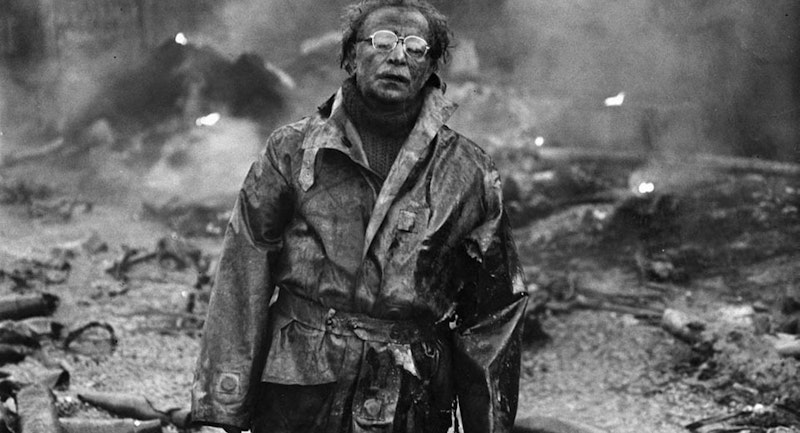When Americans imagine the end of the world, it’s often vast wastes and wandering deserts. When the Soviets imagined the end, it was damp hovels, a life forced underground while the world above decayed away. Part of it’s geographic, and how the 19th-century colonization of their respective frontiers differed. The American conquest of the west and its genocidal fervor was an attempt at replacement and rejuvenation, whereas the Russian push to the Pacific could be seen as much more expeditionary. While the density of population gravitates towards both country’s starting points, it’s substantially more weighted in the original population centers in Russia, and the connection to the islandic population centers deeper in the east as well as the coherence of the expansive nation as whole seems barely held together by the steel threads of railroad tracks.
The key difference between their respective apocalypses, is that for the Eastern Europeans it has already happened, and continues to happen again and again. The German sweep across the Western Steppe rolled like a beast out of Revelation in Come and See (1985), and the Luftwaffe’s bombing campaigns forced civilians under the wreckage of their cities. Beneath the ruins, for the former Bloc residents, feels as natural a place to set a society still crumbling after the fall like in Piotr Szulkin’s O-bi, O-ba: The End of Civilization (1985) as much as a meet-cute, like the romance that starts in a metro tunnel during an air raid in Grigori Chukhrai’s cornerstone Thaw film Clear Skies (1961). None quite capture this essence of Slavic doom like Konstantin Lopushansky’s debut feature, Dead Man’s Letters (1986), wherein pockets of survivors move about a bleak daily life while rediscovering what they’d destroyed in nuclear holocaust.
The strangest thing about Dead Man’s Letters or the host of cult films like it is precisely how strange it doesn’t feel—its fantastical images feel ripped from a history still fresh in memory, and one about to unfold. The shattered concrete and dusty winds feel as much at home in Stalingrad or the Moscow that Napoleon left in flames in War and Peace as they do with the coming thermonuclear war or collapse of the Soviet Union, where people only leave their bunkers under the cover of dense radiation suits and cans of meat have become currency. It’s also a film about a people that are uniquely equipped to handle their cycles of destruction and rebirth, not only through their endless wars and political revolutions, but the unrelenting turn of the earth, rendering in half a year a frozen wasteland and the other half a sweltering bog. The Russian world’s one of mud, whether that’s the cold mud of winter making road maintenance a Sisyphean exercise or the putrid, mosquito-ridden mud of summer, it’s a landscape that was never meant for the kind of urbanity of their Western European counterparts that the nation’s intellectuals have long-since had a complicated and conflicting relationship with.
Few writers could be said to have examined the nature of this landscape and its politics as much as the science fiction authors Arkady and Boris Strugatsky, even if not for their novels themselves but the massive inspiration they’ve left for some of Russia’s greatest filmmakers, whether that’s Aleksei German’s shit-soaked coda Hard to Be a God (2013) or Boris’ script work here on Dead Man’s Letters. The elephant in the room is Andrei Tarkovsky’s 1979 masterpiece Stalker, loosely based on the Strugatsky novel Roadside Picnic and on which Lopushansky worked as an assistant. Perhaps Tarkovsky’s greatest contribution to these landscapes is their sheer poetry. There’s a strange grace in watching nature overtake humanity in a place it was maybe never meant to be, at least not in the hyper-industrial form it took. The best scene in Dead Man’s Letters highlights this contradictory beauty, where an old library is getting picked apart by masked scavengers speaking through their distorting masks. Water has filled the hall and they wade through the floating muck into the masses of paper containing all of mankind’s knowledge lost to a new dark age. The camera pans up slowly out of the neo-primordial swamp to see the mountainous heights of the books not yet explored.
In the intervening decades, many have pointed out that “The Zone” that the archetypically philosophical voyagers of Stalker travel to bears a resemblance to the Chernobyl Exclusion Zone that would pop up less than a decade later. While Siegrief Kracauer argued that Weimar cinema’s imaginings of murderous psychosis laid bare a subconscious fear and premonition of what was to come under Nazi rule, it could be said the Eastern Bloc’s imaginings of collapse did the same for their industrial disasters, Balkanizations, and life beyond law that’d be brought about by the liberalization of the state’s vice grip which led to total economic ruin and political gangsterism that has been non-stop, with only the most fleeting glimmers of hope, since the Wall came down. To the West it may have seemed like the rush of freedom, but it turned out to be exactly as the East had feared—not the end of history, but the never-ending apocalypse.

